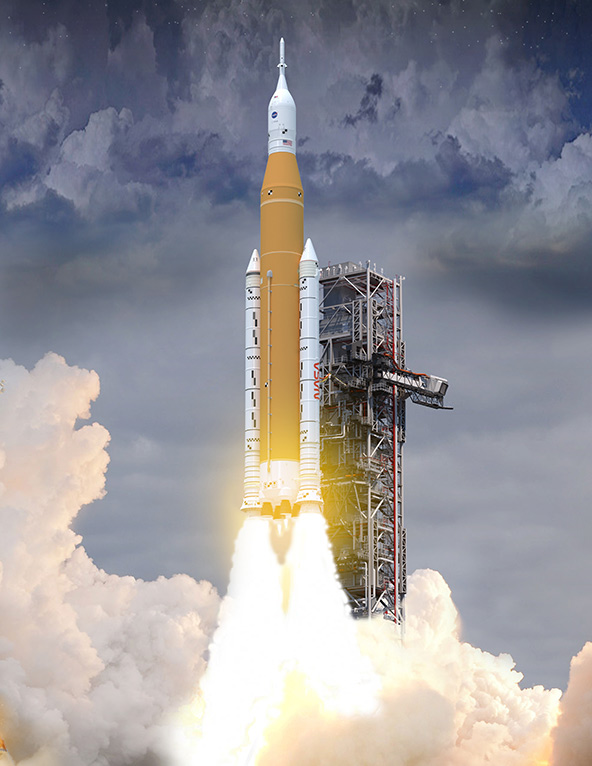On August 29 2022, NASA planned to launch NASA Artemis—the new era of space exploration—to the moon. The rocket was set to launch at 8:33 Eastern Daylight Time, but before it could launch, engineers found an issue with one of the RS-25 engines, an engine cycle powered by liquid hydrogen. They found that the liquid oxygen was not reaching the proper temperature during a planned engine bleed test. NASA posted a picture of the rocket at the Space Launch System (SLS) on the official NASA Artemis Instagram with the caption “We will try again.”
On September 2 NASA announced that they would attempt to launch the rocket for the second time on September 3 at 2:17 EDT. As NASA and the public geared up for the second attempt to make it to the moon, an unexpected leak was discovered in the hardware transferring propellants into the rocket, leading to the second postponement of the Artemis mission. This left viewers surprised and confused. “We were all shocked when Artemis was delayed for a second time. When it [the postponement] first happened, we were all optimistic about NASA’s second attempt, but unfortunately, it happened the second time and we were all kind of disappointed,” says Maria Ibrahimkhail (12), president of the Astronomy Association Club at Franklin High School. NASA then posted to the official Artemis Instagram account a photo of the rocket with the caption “Safety is our top priority.”
Artemis is planned to be a three part mission that will eventually put the first woman on the moon as well as the first person of color, while further expanding our knowledge of space exploration as a whole. Artemis I is the first step in this mission that will launch in 2022 with a crew of three mannequins named Helga, Zohar, and Moonikin Campos. Artemis II will send human astronauts around the moon and back in 2024. Artemis III is the final mission and is set to launch in 2025 bringing the first humans to land on the moon since 1972. With help from Helga, Zohar, and Moonikin Campos, NASA can better understand what the trip would be like for humans in order to better prepare for a crewed Artemis II mission in 2024. “While these mannequins might not look particularly impressive on their own, they will play a critical role in NASA’s ambitions to build a new pathway to the moon and eventually send astronauts to Mars,” Ibrahimkhail explains. According to NASA.gov, these missions “demonstrate [their] commitment and capability to extend human existence to the Moon and beyond.”
While viewers are anxiously awaiting the launch of the Artemis I rocket, it is essential that NASA takes all precautions necessary for a successful launch. “You have to understand that Artemis is a brand new design, so it would be unusual to have no problems as it is first tested,” says Jack Straton, Astronomy professor at Portland State University.
The last thing NASA wants to do is put a dent in the future plans for the mission, so they are not taking any risks. Currently the biggest problem with the rocket is the hydrogen leaks that have appeared during both attempts. However, on the second attempt the leak was far bigger. “This leak was much larger than the previous one to the point that the gas, which is flammable, built up to dangerous levels,” Ibrahimkhail explains. According to NASA.gov, “The spacecraft will launch on the most powerful rocket in the world and fly farther than any spacecraft built for humans has ever flown,” so it’s very important to get everything working properly before liftoff.
On September 27 2022 Artemis I made its way back to the SLS in preparation for the third attempt at the Kennedy Space Center in Cape Canaveral, Florida. While it is still unknown the exact date of the third launch attempt we can only assume it will be soon. The mission should last roughly 38 days with a total of 1.3 million miles traveled. Will Helga, Zohar, and Moonikin Campos make it?


































